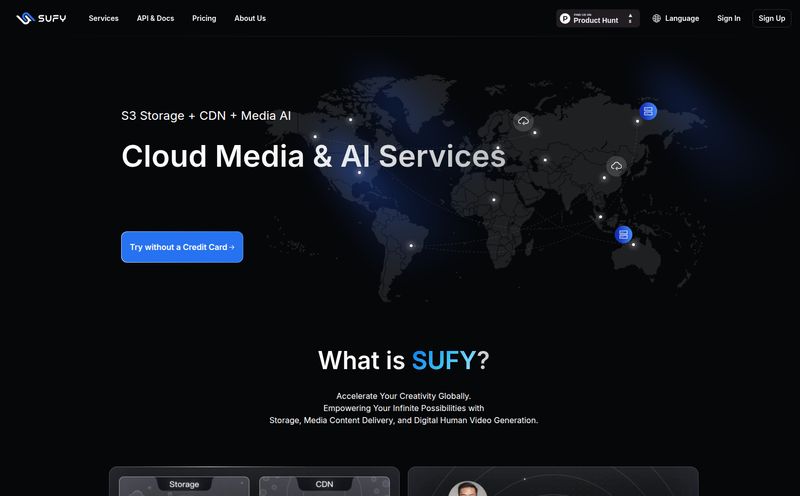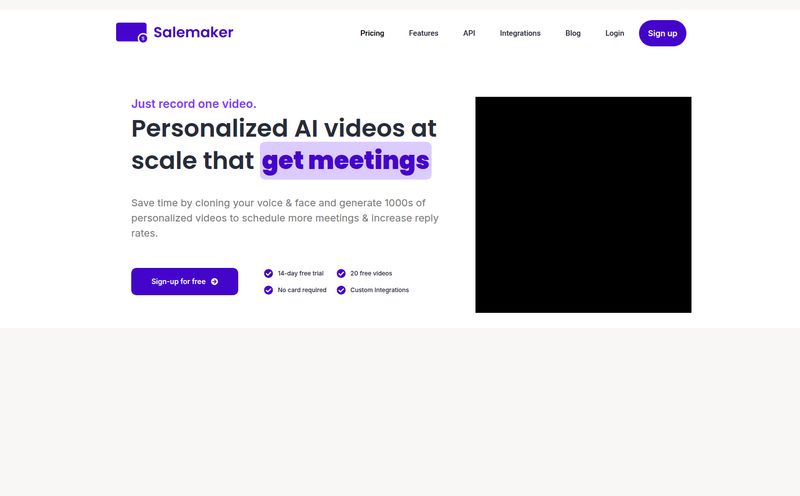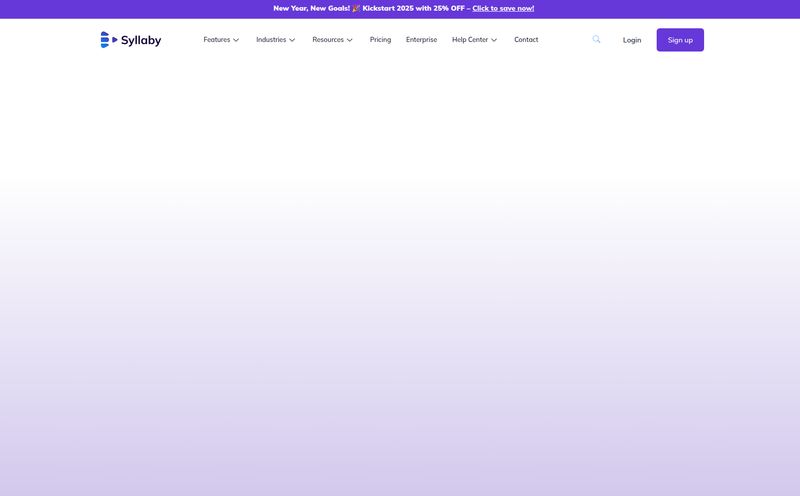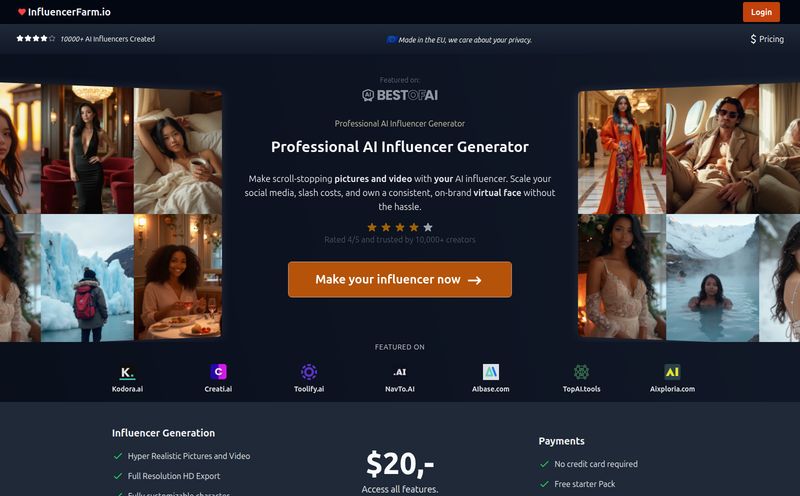Is Another AI Video Tool Really What We Need?
If I see one more “revolutionary AI tool” pop up in my feed, I might just throw my laptop out the window. Every week there's a new contender promising to change the game, and frankly, most of them are… well, they're a bit meh. They produce clunky, uncanny valley videos that scream 'I was made by a robot'. So when I first heard about Flux Video AI, my skepticism was cranked up to eleven.
The marketing-speak is slick, I'll give them that. “Create Cinematic Videos with AI Instantly.” “Your AI Video Creation Powerhouse.” It sounds great on a landing page, but I've been in the SEO and content game long enough to know that promises are cheap. Traffic and engagement are not.
But the buzz wouldn't go away. I saw a few creators I respect posting some surprisingly slick clips. So, I caved. I put my cynicism on the shelf, grabbed a coffee, and decided to take Flux Video AI for a proper test drive. Is it just another drop in the AI ocean, or is there something genuinely useful here for us marketers, storytellers, and content creators? Let’s find out.
So, What Exactly is Flux Video AI?
At its core, Flux Video AI is a platform that takes your words or your static images and spins them into video clips. Simple enough. But the secret sauce, the thing they’re hanging their hat on, is the quality. It’s not just about making things move; it’s about making them move with style, with feeling. Think of it less like a simple animation tool and more like having a tiny, eager-to-please director of photography living in your browser. You give it a creative brief (a line of text or an image), and it comes back with a shot that has actual camera movement—pans, tilts, dollies—the stuff that makes a video feel professional and, dare I say, cinematic.
It’s clearly built for people who need good-looking video content, but don't have the time, budget, or skills for a full-on video production workflow. I'm talking about social media managers desperate for fresh content, marketers needing a quick ad creative, or an author wanting to bring a scene from their book to life. It bridges a very real gap.
Kicking the Tires: A First Look
Signing up was painless. No credit card required for the free plan, which is always a good sign. The interface is clean, dark, and straight to the point. No fluff. You're basically presented with a prompt box and a few options. I love that. I don’t need a thousand confusing buttons.
For my first experiment, I went with a simple text prompt: “A lone astronaut standing on a red, dusty planet, looking up at a giant, swirling nebula in the sky, cinematic, 8k.” I’ve used similar prompts in other tools and gotten… mixed results. Sometimes you get a guy in a fishbowl standing in a sandbox.
I hit generate and waited. The rendering time wasn't instantaneous, but it was faster than brewing a second cup of coffee. And the result? I was genuinely impressed. The astronaut didn’t look wonky. The planet felt vast. But the best part was the camera. It started wide and did a slow, subtle push-in, making the scene feel grand and a little lonely. It understood “cinematic.” It got the memo.
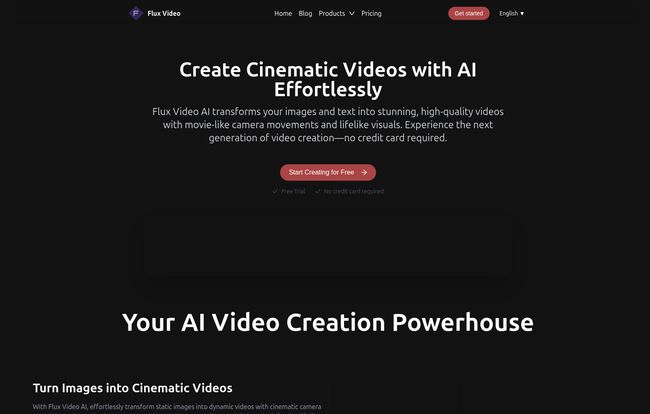
Visit Flux Video AI
Turning Still Images into Living Scenes
The image-to-video feature is where I think a lot of the magic lies for marketers. We all have a library of great photos, right? Product shots, event photos, stock images we paid good money for. Flux lets you breathe new life into them. I uploaded a high-res photo of a classic car on a city street at night. The tool added a slow, sideways tracking shot, making it feel like you were gliding past the car. The reflections on the wet pavement seemed to shimmer. It was no longer just a photo; it was a mood. For a 15-second social media clip or a website banner, this is gold.
The AI Actually Understands Context
This is the part that often separates the great AI tools from the just-okay ones. Contextual understanding. One of the user testimonials on their site says the tool is “scary good at interpreting my weird abstract thoughts,” and I have to agree. It does a surprisingly good job of grasping the nuance in a prompt. You can ask for a specific feeling—like “a serene, peaceful library with gentle morning light”—and it delivers something that captures that vibe, not just a literal interpretation of the words. This reduces the amount of re-rolling and prompt-wrangling you have to do, which is a huge time-saver.
The All-Important Question: What's The Cost?
Alright, let's talk turkey. The free plan is surprisingly generous. You get free credits just for logging in daily, which is more than enough to experiment and even create a few clips for a small project. But, as with most things in life, you get what you pay for. The free videos are capped at 15 seconds and come with a watermark.
To really get the most out of it, you'll want to consider a paid plan. Here's a quick breakdown:
| Plan | Price (USD/month) | Key Features |
|---|---|---|
| Free | $0 | Free daily credits, 15-second max length, watermarked videos. |
| Standard | $10 | 660 credits/month, remove watermark, up to 3-min videos, advanced camera control, image quality enhancement. |
| Pro | $37 | 3000 credits/month, all Standard features, plus priority access to new features. |
| Premier | $92 | 8000 credits/month, all Pro features. |
In my opinion, the Standard plan at $10/month is the sweet spot for most people. It removes the watermark and bumps the video length up to 3 minutes, which is a massive jump. That's enough for serious social media content, ads, and even short explainer videos. The Pro and Premier plans are for the power users and agencies churning out high volumes of content.
Where It Could Be Better (Because Nothing's Perfect)
I wouldn't be giving you an honest review if I didn't point out the areas for improvement. While the quality is high, the variety of animation styles feels a bit limited at times. You get that signature smooth, cinematic look, but if you're looking for something more stylized, like stop-motion or cartoonish, this isn't the tool for that. At least, not yet.
Some users, myself included, would love a bit more granular control. Things like setting a specific aspect ratio from the get-go or having more direct influence over the type of camera movement would be fantastic additions. And while the rendering is reasonably fast, when you're on a tight deadline, every second counts. I'm sure speed is something they're constantly working on.
So, Who is Flux Video AI For?
This tool isn't trying to be a full-blown video editor like Adobe Premiere. And it's not trying to create the next Pixar movie. It has a very specific, and very useful, purpose.
This is perfect for:
- Social Media Managers: You can create an endless stream of eye-catching video content for Instagram Reels, TikTok, and Facebook from a single image or idea.
- Marketers & Advertisers: Need to quickly test a dozen different video ad concepts? This is your new best friend. It’s ideal for generating B-roll or background visuals for campaigns.
- Indie Creators & Solopreneurs: If you're a one-person-show, this gives you the power of a small production team without the overhead. Visualize concepts, create promo materials, or just make cool stuff.
It's probably not for professional videographers who need absolute frame-by-frame control or anyone producing long-form documentary content.
Frequently Asked Questions about Flux Video AI
Is Flux Video AI actually free to use?
Yes, it is. There's a free-forever plan that gives you daily credits to generate videos. However, these videos will have a watermark and are limited to 15 seconds in length. It's a great way to try out the platform with zero risk.
How long can the videos be?
On the free plan, videos are capped at 15 seconds. If you upgrade to any of the paid plans (Standard, Pro, or Premier), you can extend the video length up to 3 minutes, which is pretty substantial for an AI generator.
Can I remove the watermark from the videos?
You sure can. Removing the watermark is one of the main perks of upgrading to any of the paid plans, starting with the Standard plan at $10 per month.
Can I use the videos for my business or marketing?
Absolutely. The platform is designed for creators, marketers, and storytellers. Once you're on a paid plan and creating watermark-free videos, they are perfect for social media, ads, and other commercial projects. As always, it's a good idea to glance over their latest Terms of Service, but it's built for this purpose.
What makes Flux Video AI different from other AI video tools?
From my experience, its main differentiator is the consistent high quality and the focus on "cinematic" camera movements right out of the box. Many other tools can make an image move, but Flux does a better job of making it feel like a real camera shot, which adds a layer of professionalism.
The Final Verdict on Flux Video AI
So, back to my original question: Is Flux Video AI just more noise on the AI hype train? My verdict is a solid no. It's not noise; it's a clear signal. This is a genuinely useful, high-quality tool that delivers on its core promise. It makes creating beautiful, cinematic video clips from text and images incredibly accessible.
It’s not perfect, and it won't replace a skilled human video team for a big-budget project. But it's not supposed to. For the vast majority of day-to-day content creation needs, it’s a powerful, time-saving, and dare I say, fun-to-use asset. It’s one of the few AI tools I’ve tested recently that I’ll actually keep using in my own workflows.
If you've been on the fence about AI video, I highly recommend you give the free version a spin. You've got nothing to lose and a whole lot of creative potential to gain.
Reference and Sources
- Flux Video AI Official Website
- Flux Video AI Pricing Page
- Wyzowl - Video Marketing Statistics (for context on video's importance)
